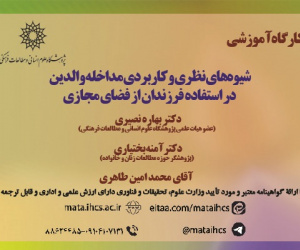بازپژوهی فقهی دیه شکستن ترقوه با تکیه بر نقد و پیشنهاد اصلاح ماده 656 ق.م.ا (مقاله علمی وزارت علوم)
درجه علمی: نشریه علمی (وزارت علوم)
آرشیو
چکیده
حکم شکستگی استخوان ترقوه در فرض درمان همراه با عیب بر اساس ماده 656 ق.م.ا، دیه مقدر است. مطابق با ماده مذکور، هرگاه هردو استخوان ترقوه بشکند و همراه با عیب درمان شود، دیه آن برابر با دیه انسان کامل خواهد بود. و اگر یک استخوان ترقوه بشکند و همراه با عیب درمان شود، دیه آن برابر با نصف دیه کامل انسان خواهد بود. خاستگاه تقنین مذکور، بر اساس یکی از دو دیدگاه موجود در فقه الدیات است. گروهی از فقهای امامیه با دیدگاه دیه مقدر در جنایت مورد بحث موافق نیستند، بلکه بر این عقیده هستند که برای شکستن ترقوه در فرض درمان همراه با عیب باید به حکومت رجوع نمود. با تتبع در آراء هر دو دیدگاه، معلوم می شود؛ قائلین هر یک از دیدگاه های مذکور برای اثبات نظر خود به ادله متفاوتی استناد کرده اند. پژوهش حاضر بر اساس روش توصیفی- تحلیلی به طرح دیدگاه های موجود درباره مسئله حاضر پرداخته و ضمن ذکر ادله با استفاده از روش تضارب آراء به نقد و بررسی هر یک از دلایل اقدام کرده است. تحقیقات صورت گرفته منتج به نقد بخشی از ماده 656 ق.م.ا شده است؛ زیرا پذیرش دیه مقدر برای شکستگی ترقوه در فرض درمان با عیب با اشکال های متعدد اصولی و فقهی مواجه است، در حالی که رجوع به حکومت برای جنایت مذکور از هرگونه خدشه و نقدی به دور بوده و مختار بسیاری از فقهای امامیه است.Reappraisal of Legal Compensation (Diyah) for Breaking Clavicle Bone Based on Criticizing and Amending Article 656 of Islamic Penal Code
A broken clavicle, if treated with defect, is compensated for a certain amount of money based on Article 656 of the Islamic Penal Code. According to this article, if both collarbones are broken and treated with defect, its compensation is equal to compensation for a full human (full diyah). If only a clavicle bone is broken and it is treated with the defect, its compensation is equal to the half diyah of a full human. The origin of the aforementioned legislation is based on one of two opinions in jurisprudence. A group of Imami jurists do not agree with the certain compensation incumbent in the first presumption, but they believe that a broken clavicle, if treated with defect, must be remitted to the state (hukūma). A study of both groups' opinions shows that their proponents cited different arguments to prove their views. Using the descriptive-analytical method, this research studies and criticizes the opinions, in addition to mentioning their evidence. The research results in criticism of part of Article 656 of the Islamic Penal Code, as the acceptance of a certain compensation for a broken clavicle, if treated with defect, has many fundamental and jurisprudential problems, while in case of remitting to the state, the ruling would be far from any criticism, and so it is accepted by many Imami jurists.






